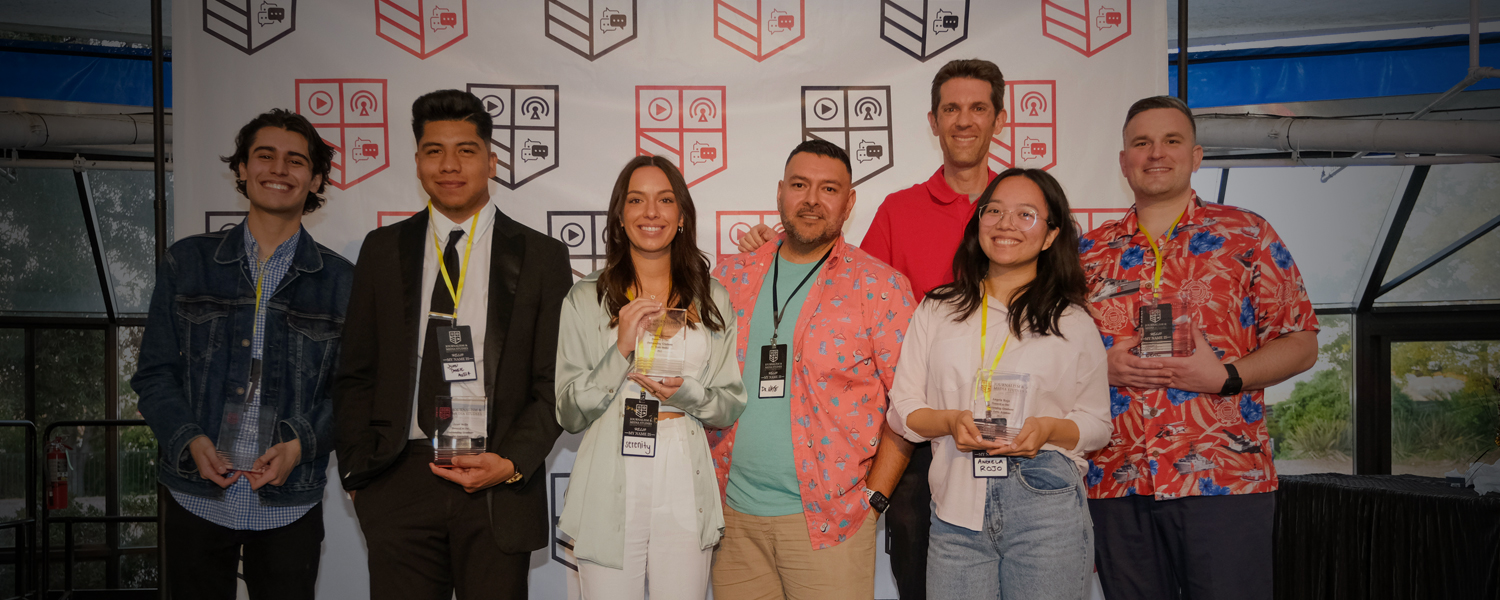Research Centers
Our vibrant and collaborative interdisciplinary research culture creates new knowledge, advances scholarship and helps reinvent media. Our faculty and students tackle tough questions, the answers to which can help build a better understanding and society for future generations.
The Media, Identity, & Communication (MIC) Innovation Research Lab is a creative research collaborative that focuses on intersectional identity studies in media, entertainment, communication, and pop culture. The lab was founded by Dr. Nathian Shae Rodriguez, Associate Professor of Digital Media and Associate Director of the School of Journalism & Media Studies with funds from the inaugural SDSU Presidential Research Fellowship. The lab’s mission is to foster innovative research imbued with creative media technology that bridges boundaries between intersectional scholars, practitioners, and media producers. The lab plays a crucial role in the School’s role in educating and empowering diverse scholarship in our students and faculty.
To learn more, visit the MIC Innovation Research Lab website.
Glen Broom was the professor of the profession, having written the definition of PR we all memorized. His textbook Cutlip & Center's Effective Public Relations sits on the desk of nearly every PR practitioner. The center named in honor of Dr. Glen Broom carries on his legacy by pushing people to improve the practice of public relations. Operating from San Diego State University where Dr. Broom taught for more than 30 years, the center invests in the people pushing the status quo in PR.
To learn more, visit the Broom Center website.
The Center for Science and Media is a collaboration of the School of Journalism and Media Studies with the College of Sciences in the areas of research, public service, and curriculum. The Center’s mission is to educate the public about science, through the strategic and ethical use of media. Activities have included:
- Crisis communications training for first responders, public information officers, and journalists on how to work together to inform the public in times of crisis;
- News writing course dedicated to science students; $35,000 grant from the Online News Association, which funded geology and journalism students in a joint electronic sensor project to detect air quality levels in San Diego;
- Colloquium series for public education on such topics as drones in journalism, environmental news reporting, crisis management post-Hurricane Katrina, mental traps faced by scientists and journalists, and crowd-sourcing public health data, such as radiation levels post-Fukushima.
San Diego State's only dedicated eye-tracking lab allows researchers to study where a person is looking and the sequence in which a person’s eyes are shifting across a computer screen.
Using a Tobii eye-tracker, a ruler-sized device that sits at the base of a desktop computer and which uses infrared light to track eye movement, researchers can see things like how much text a person reads; how long they "dwell" on a particular item, such as an advertisement, image or word; their point of entry in an online site; and the pattern their eyes follow as they navigate the screen.
In service since 2018, the lab has produced data from experiments that have resulted in peer-reviewed research papers by JMS associate professor Dr. Arthur Santana and JMS alumnus Dr. Toby Hopp from the University of Colorado Boulder. New research studies are currently underway. To find out more about the eye-tracking lab, contact Prof. Santana at [email protected].

